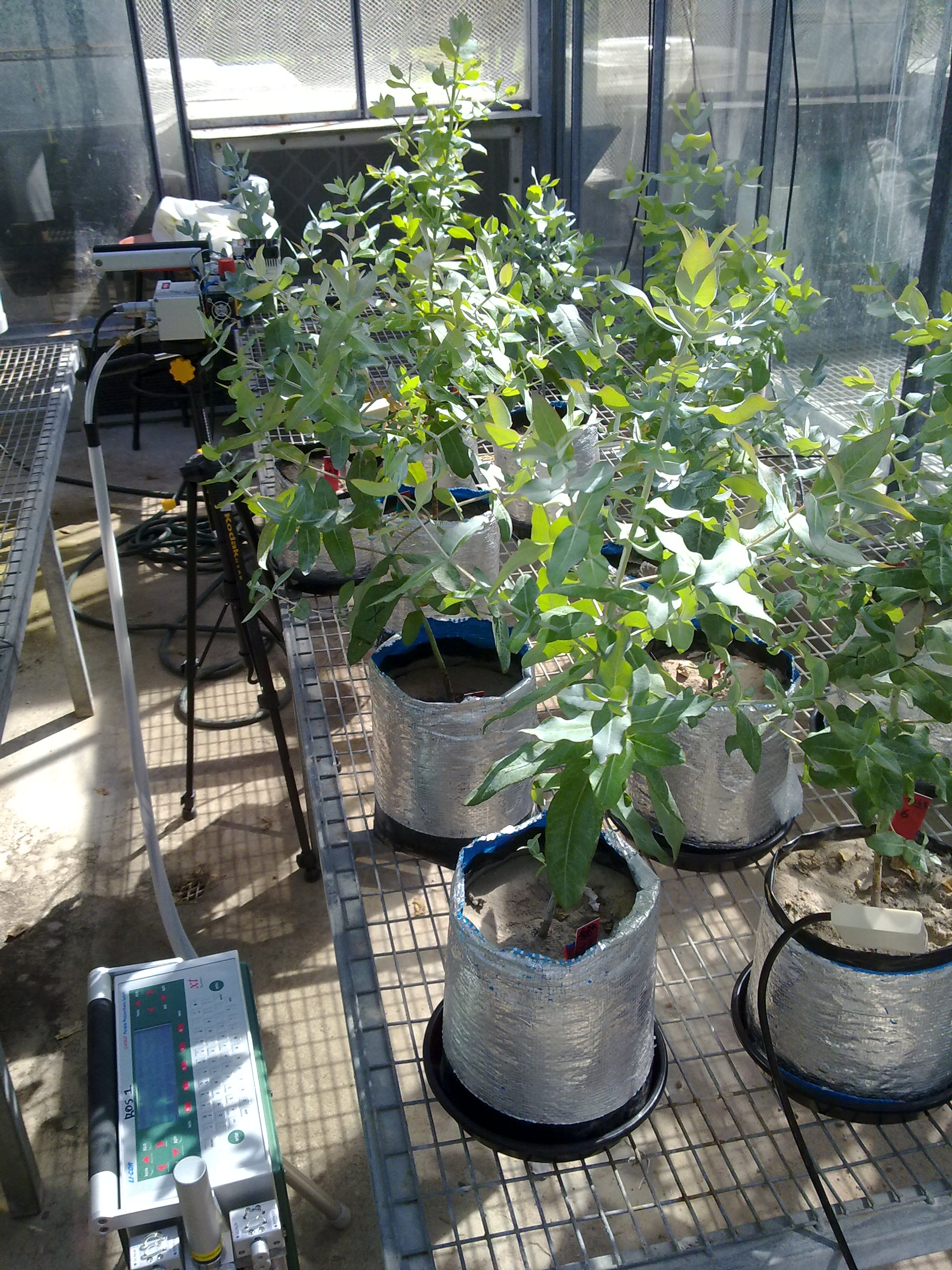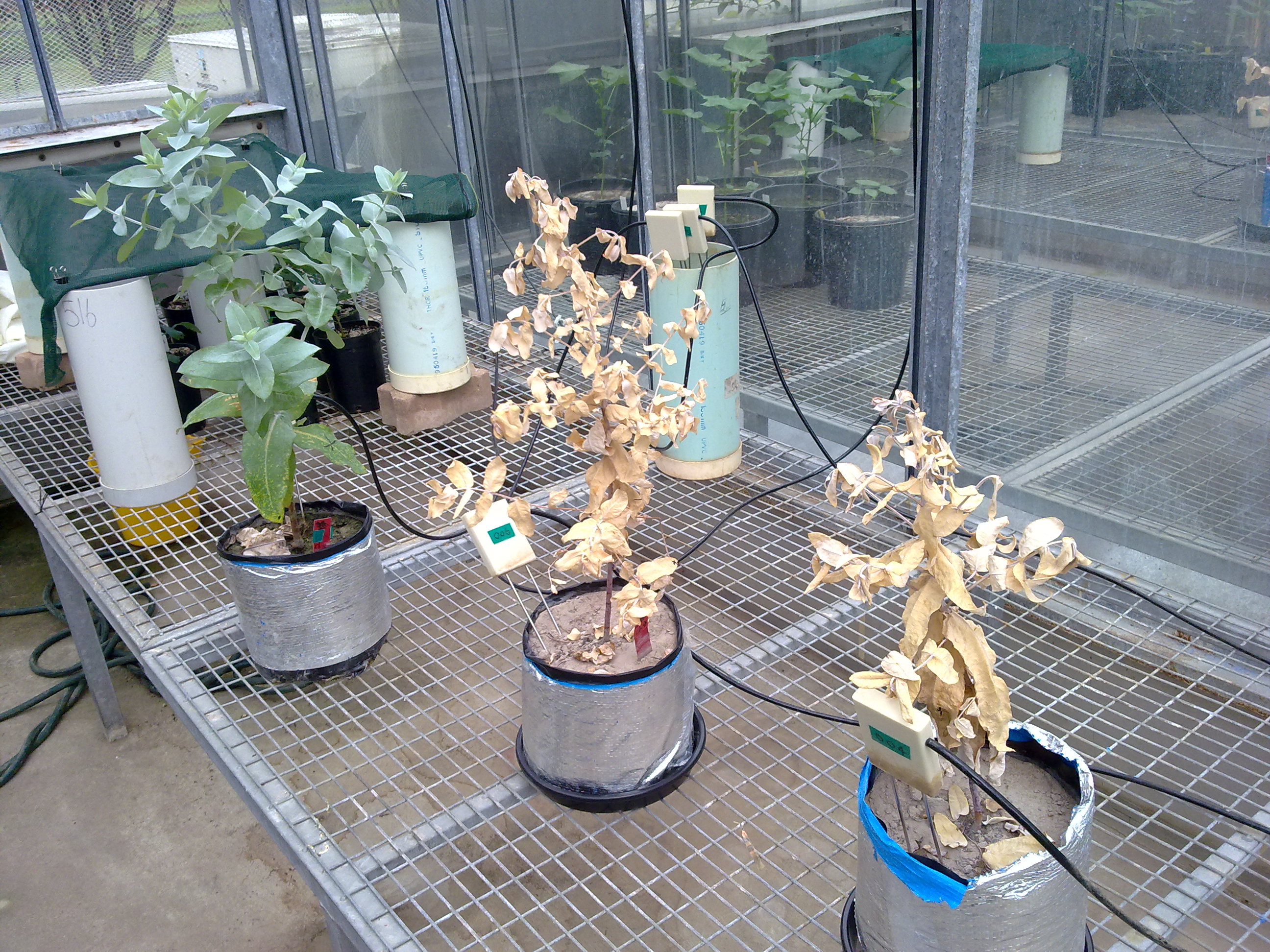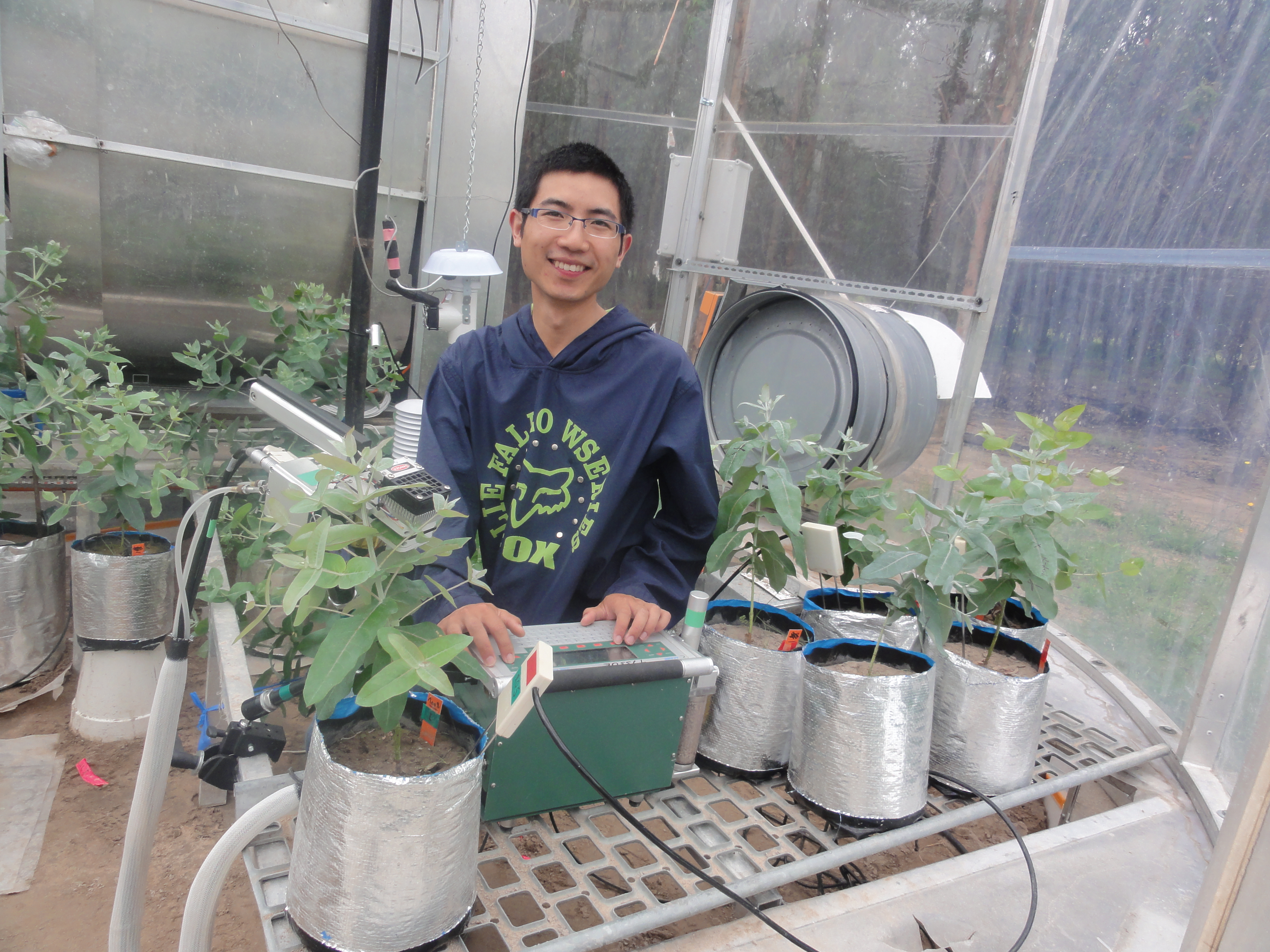Doctor Honglang Duan
Candidature
 Graduated PhD 2014.
Graduated PhD 2014.
Thesis Title
How will the main and interactive effects of elevated [CO2] and elevated temperature affect tree respnse to drought and drought-induced tree mortality?
Research Project
The recent increase in drought-induced tree mortality around the world has rekindled strong interest in the physiological mechanisms leading to mortality, including the role of climate change. Three mortality mechanisms have been proposed in McDowell et al.2008, namely biotic agent demographics, hydraulic failure and carbon starvation. In general, experimental assessment of these mechanisms is minimal and the interactive effect of warmer temperature and elevated [CO2] on drought induced tree mortality has not been studied. Furthermore, eucalypt trees, which dominate forests throughout Australia, are a fast-growing source of wood and have commercial benefits. Thus, research on drought-induced mortality in eucalyptus is of great importance to eucalypt forest structure and function.
In this study, we tested the drought-induced carbon starvation hypothesis by growing Eucalyptus globulus seedlings in sunlit glasshouses differing in growth [CO2] (400 and 640μL L-1) and temperature (28 and 32°C). Seedlings were then exposed to different watering regimes: well-watered, sustained drought, and re-watered drought (rewatering half sustained drought plants), then drying drought plants until plants died from drought. During the experiment, leaf net photosynthesis at saturating light (Asat), night respiration rate (Rn), plant growth (e.g. relative growth rate (RGR)) and total non-structural carbohydrates (TNC) were measured.
Our primary findings to date (but prior to plant death) are the following:
1. Drought impacts. Drought decreased Asat, Rn, growth and leaf TNC in all CO2 and temperature combinations, but increased stem and root TNC. Asat approached zero at day of treatment (DOT) 33 in sustained drought plants and at DOT 41 in rewatered drought plants. However, Rn was maintained at a low level in both treatments.
2. Growth [CO2] and temperature impacts. Elevated CO2 increased Asat, Rn, leaf and root TNC in drought plants. However, elevated temperature reduced Asat and TNC (leaf, stem and root), but increased Rn in drought plants.
3. Drought duration impacts on TNC. The decline in leaf starch was lower in sustained drought plants than in re-watered drought plants, but stem starch declined substantially in both drought treatments. By contrast, leaf soluble sugars increased in both drought treatments. In summary, across all CO2 and temperature combinations, leaf TNC increased in both drought treatments.
Our data suggests that a low intensity, but long drought, stops plant growth, gradually reduces net photosynthesis to zero, but does not substantially affect leaf night respiration. Although we are still analysing data from the final three weeks of our study, a sustained negative carbon balance could kill the plants by carbon starvation. Besides, warming would exacerbate plant mortality, but elevated CO2 may not.
Research Photos


Research Project Supervisors
Professor David Tissue, Dr Remko Duurmsa, Dr Brendan Choat, Dr Tony O'Grady
Awards/Honours
Awarded the 2013 HIE Student Paper Award for published research on the effects of drought and mortality on eucalyupts
Awarded 1st prize ($250 book voucher) in the Postgraduate Research Futures Forum for the presentation 'What kills plants: a mechanistic understanding of the physiological basis for drought-induced mortality in Eucalyptus globulus'
Publications
Duan H, Ontedhu J, Milham P, Lewis JD, Tissue DT, (2019) 'Effects of elevated carbon dioxide and elevated temperature on morphological, physiological and anatomical responses of Eucalyptus tereticornis along a soil phosphorus gradient', Tree physiology, vol.39, no.11, pp 1821-1837
Duan HL, Chaszar B, Lewis JD, Smiths RA, Huxman TE, Tissue DT, (2018) 'CO2 and temperature effects on morphological and physiological traits affecting risk of drought-induced mortality', Tree Physiology, vol.38, no.8, pp 1138-1151
Gauthier PPG, Crous KY, Ayub G, Duan H, Weerasinghe LK, Ellsworth DS, Tjoelker MG, Evans JR, Tissue DT, Atkin OK, (2014) 'Drought increases heat tolerance of leaf respiration in Eucalyptus globulus saplings grown under both ambient and elevated atmospheric [CO2] and temperature', Journal of Experimental Botany, vol.65, no.22, pp 6471-6485
Duan H, Duursma RA, Huang G, Smith RA, Choat B, O'Grady AP, Tissue DT, (2014) 'Elevated [CO2] does not ameliorate the negative effects of elevated temperature on drought-induced mortality in Eucalyptus radiata seedlings', Plant, Cell and Environment, vol.37, no.7, pp 1598-1613
O'Carrigan A, Hinde E, Lu N, Xu X, Duan H, Huang G, Mak M, Bellotti B, Chen Z, (2014) 'Effects of light irradiance on stomatal regulation and growth of tomato', Environmental and Experimental Botany, vol.98, pp 65–73
Duan H, Amthor JS, Duursma RA, O'Grady AP, Choat B, Tissue DT, (2013) 'Carbon dynamics of eucalypt seedlings exposed to progressive drought in elevated [CO2] and elevated temperature', Tree Physiology, vol.33, no.8, pp 779-792
View the Thesis
» Australasian Digital Theses Online (opens in a new window)
